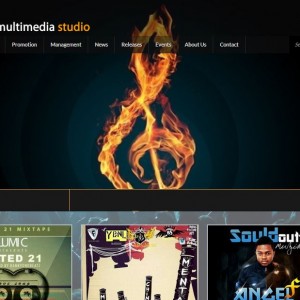
6 Inbound Marketing Techniques Every Business Should Use
Every business needs to do some kind of marketing. But what kind of marketing is the most effective? Most of the conventional marketing approaches are too expensive or unwieldy for smaller businesses and startups to successfully employ. That’s why inbound marketing, and its various techniques, make sense for any business — but especially for startups and smaller businesses.
Inbound marketing is more of an approach than it is a list of tactics. Inbound marketing, at its core, is about attracting prospects to your business rather than going out to find those prospects. Traditional marketing relied on email lists, cold-calling, billboard advertisements, and direct mail.
Modern inbound marketing uses organic search traffic, opt-in email forms, and content publication to attract customers. Inbound marketing is the best approach for today’s businesses, whether B2B, B2C, e-commerce, SaaS, tech, non-tech, brick-and-mortar or otherwise.
1. Blogging
Blogging is the foundational element of an inbound marketing plan, and involves creating helpful, relevant blog articles that address the pain points of your target personas. These educational pieces play a major role in attracting leads and helping boost organic traffic to your website.
It’s important to understand, however, that results won’t come overnight. At a rate of one blog article/week (the minimum we recommend), it typically takes 12-18 months before companies see exponential traffic growth. Google rewards consistency, so through a dedicated publishing schedule of at least one article per week, you can expect to see exponential traffic growth after around 55-70 articles, followed by steady growth as you continue to publish with consistency.
2. Social Media Marketing
What good are high-quality blog articles if they’re never seen? While quality content will certainly be rewarded over time by Google in organic search, it’s important for companies and their employees to promote blog articles on social media immediately. We’d recommend sharing these articles on company profiles like LinkedIn and Facebook and also encouraging staff to share these articles with their own social networks.
Sharing older company articles, relevant third-party content, and posts promoting company culture will also go a long toward building your company’s brand on social media and proving ROI from these activities.
3. Advanced Content Creation
Creating advanced content pieces not only generates new contacts but can also drive existing contacts further down the sales funnel. Advanced content comes in many forms, but some of the most common types include eBooks, tip sheets, whitepapers, and how-to guides.
4. Email Marketing
A well-crafted email marketing strategy is crucial for providing prospects with the right content at the right time.
Email marketing is the process of sending messages to people who have given you their email addresses to entice them to come back to your site. Once there, you can engage them and motivate them to become paying customers — even if they’ve bought from you before.
For example, say you’re a B2B company that sells computer hardware to small- and medium-sized businesses. You have a wide selection of reliable and useful hardware, but it’s also more expensive than your competitors’ products. Through your research, you’ve discovered that the average time it takes to buy the hardware you (and other companies) offer is three months.
5. Marketing Automation (Lead Nurturing Workflows)
A recent Hatbuck poll revealed that 80% of businesses reported that marketing automation increased the number and quality of leads to their business. By employing marketing automation such as lead nurturing workflows that promote blog articles and advanced content pieces via email — sales teams become much more satisfied as they are able to connect warmer leads from the outset who have already been nurtured with relevant content. It essentially replaces the cold call with contextual marketing, serving as a win-win for prospects and your sales team.
6. Search Engine Optimization (SEO)
We’ve talked about the importance of blogging and advanced content, but without a search engine optimization strategy, this content might never be found organically in the first place. Quality SEO starts with keyword research and a well-defined keyword strategy that hones in on words and phrases your target personas are likely to be searching — those that address their pain points.
While there are many other factors that influence SEO, including website user experience (e.g., mobile-first design and website security), it all starts with finding the best keywordsbased on your potential buyers and creating highly-targeted content around them.
7. Growth Driven Design (GDD) Approach for Your Website
Websites of old required tons of time dedicated to planning and launching the website, only to let the website sit there until it became obsolete again within a few years. Growth Driven Design flips this old practice on its head by taking an iterative, user-centric, data-driven approach to website improvement. A GDD approach requires analysis of user behavior on your website, which informs areas of improvement and updates to make that will enhance user experience and drive users toward the content they’re interested in most.
8. Video Content
We could place this under a broader category called “content strategy,” but along with blogging and advanced content, video deserves a category all on its own. There’s been a recent explosion in video content and it’s estimated that video traffic will make up roughly 80% of consumer Internet traffic by 2021! Plain and simple, there’s no better time than right now to use video as part of your inbound marketing strategy.
In the industrial manufacturing space, there’s a wide array of video content that can spark the interest of your prospects, including customer testimonials, product demo videos, case studies and video blogs. The key is educating the audience on the value of these products or services.
Searching for inspiration? This article highlights four industrial companies who are using video to their advantage.
Why Inbound?
At this point, we hope you’ve seen the value of each of these components and how these activities are dependent upon one another for achieving inbound marketing success. Want to learn more about how to leverage the power of inbound marketing? Be sure to read our Step-By-Step Guide to Inbound Marketing!








